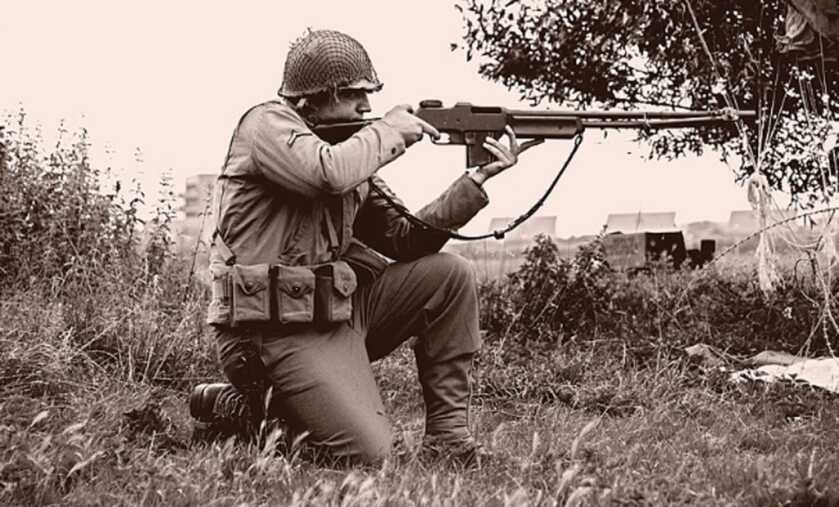

Hidden in Plain Sight
Mr. Roberson was an unassuming old guy who looked like everybody’s grandfather. Whenever he came to the clinic he always wore the same uniform—a pair of bib overalls over a pressed collared shirt buttoned at the neck and wrists along with a dapper ball cap. When first I saw him as a patient it was for arm pain.
I asked him to unbutton his sleeve so I could take a look and noticed a mass of scars on his forearm. I innocently inquired as to the source. He quietly explained that he still carried fragments from a German potato masher grenade left over from World War 2.

It turned out that Mr. Roberson was my neighbor down the road, and he ultimately shared a lot of stories. A literal lifetime before this unassuming Mississippi farmer carried a Browning Automatic Rifle as a member of the 5th Ranger Battalion in World War 2. On June 6th, 1944, he landed in the first wave on Omaha Beach fighting alongside the 116th Infantry Regiment. We’ve all seen Saving Private Ryan. That was his unit. That was this man.

Mr. Roberson told me when he first met Patton the General was railing that Eisenhower was not moving fast enough.
He lost two toes at the Battle of the Bulge and barely survived the Huertgen Forest. He met General Patton twice. He said Patton was as profane and flamboyant in person as the movie made him out to be.
When the war was finally over he rode a packed troopship back across the Atlantic, encountering a vicious storm en route. He said that was the most terrified he was throughout the war. He said that storm was worse than D-Day because he was afraid the ship would capsize and he would drown.
When he finally got home his mother threw a party. Friends and family came from all around to celebrate his safe return. When everyone finally went home he found that his mom had left his bedroom exactly as it had been before he had gone off to war. She bid him good night, changed into her nightclothes, and went to bed herself.
As he lay there in the darkness he told me that he just couldn’t do it. After nearly a year under fire, he found that he could no longer sleep above ground. He tipped out into the backyard, retrieved a shovel from the woodshed, and quietly dug himself a hole. His mother subsequently heard the noise and went out in her nightgown to investigate. When she came upon her young son curled up in that hole in the backyard and realized for the first time what he had been through she fell to her knees and wept. As I sat there in the clinic across from this soft-spoken old guy I was struck speechless.
The BAR in Action
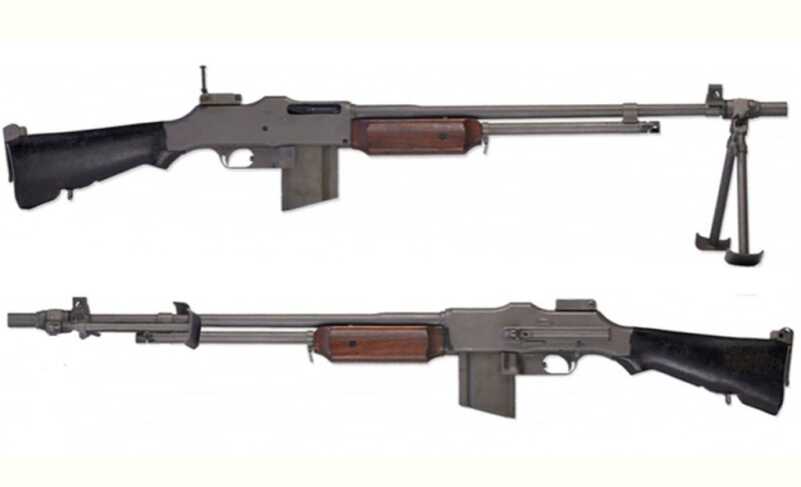
The Browning Automatic Rifle was a bulky but effective support weapon that was generally well liked despite its flaws.
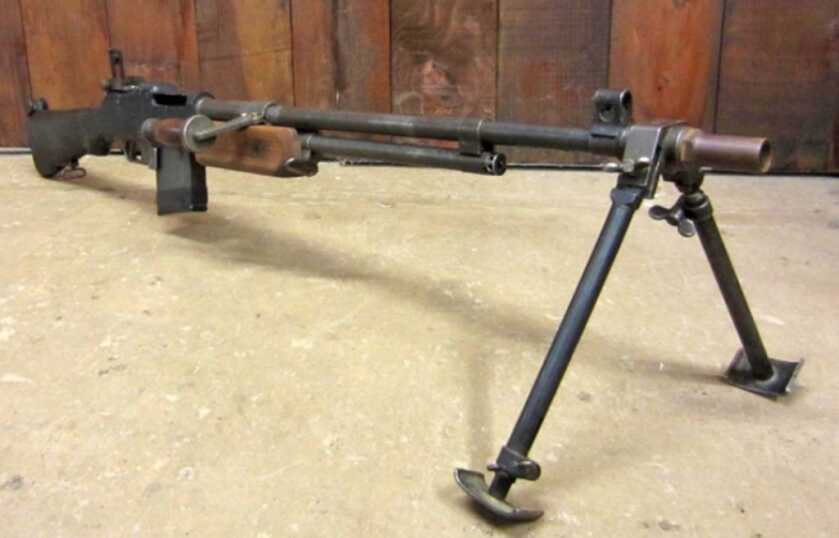
Mr. Roberson told me the BAR was just sinfully heavy but a superb fighting weapon. He was a small-statured man, and his BAR weighed 19 pounds. However, these were no ordinary men.
At one point Mr. Roberson was crouched in a roadside ditch along with a small reconnaissance patrol counting German tanks as they roared by mere feet from where he was hidden. After a group of enemy armored vehicles passed a German officer and his driver puttered up on a motorcycle equipped with a sidecar and stopped right in front of him. The officer stood up in the sidecar and began scanning the area on the opposite side of the road through a pair of binoculars. I’ll relate what happened next just as Mr. Roberson told it to me.
“I was hidden in the grass, and that German officer was peering off in the opposite direction. I thought to myself, ‘Those sure are some nice binoculars.’ I looked to the right and then to the left, and I didn’t seen any more German tanks. So I jumped up with my BAR—Blam, blam, blam, blam, blam…got ‘em both!”
“My Lieutenant ran up to me screaming, ‘Roberson! Have you lost your mind? Every Kraut in Germany is gonna be on top of us now!’ He chewed my butt something fierce, and we had to bug out pretty fast.”
Mr. Roberson then looked at me with a mischievous grin and said, “But I still got them binoculars!”
The Gun
The gun that Mr. Roberson carried across Western Europe was originally designed in 1917.
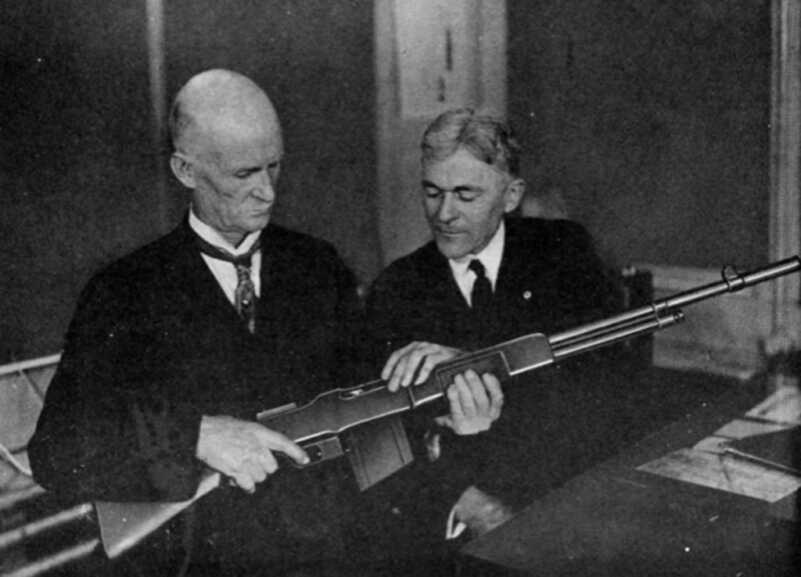
John Browning was the most prolific gun designer in human history. He held 128 patents at the time of his death.
The esteemed firearms luminary John Moses Browning created the BAR as a tool optimized for an obsolete mission. Back then it was felt that a self-loading selective-fire rifle-caliber gun that could be run from the hip would be the key to getting Allied troops up and out of the trenches.
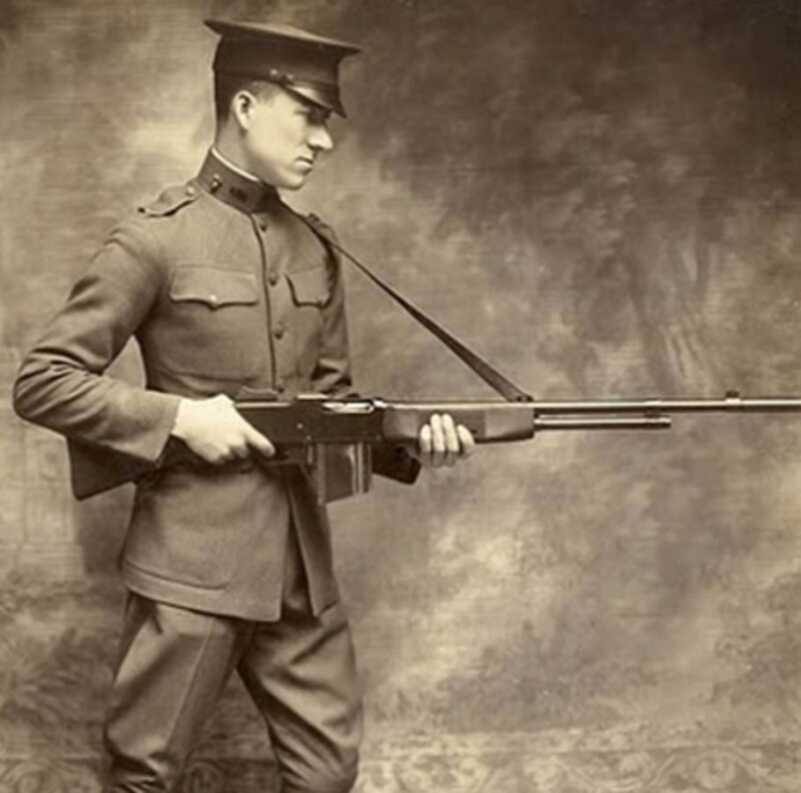
The BAR was originally known as the Browning Machine Rifle and was intended to be used for walking fire across the blood-soaked battlefields of WW1.
Early BAR web gear even included a metal cup on the side that would support the buttstock during this “walking fire.” In practical application walking fire didn’t work out so well.
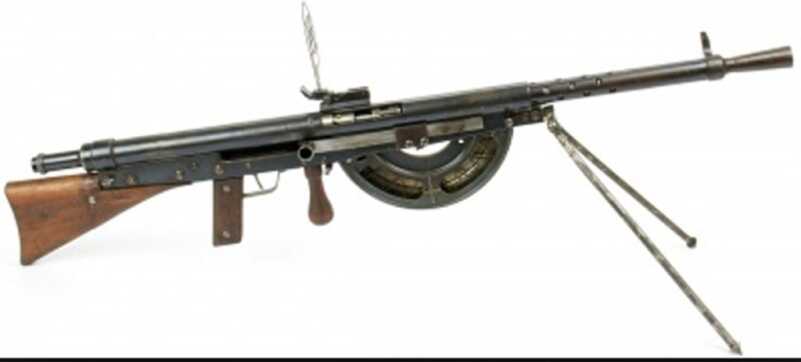
The French Chauchaut has been rightfully denigrated for its sordid performance during WW1. It was in actually well ahead of its time.
At the time of its introduction, US Doughboys were wielding French Chauchaut and M1909 Benet-Mercie machine guns. In fact, in 1917 the US Army only possessed 1,110 machineguns of all sorts. In response, John Browning developed the BAR, first called the Browning Machine Rifle, along with the M1917 water-cooled belt-fed machinegun.

John Browning demonstrated both the BAR and the M1917 belt-fed machinegun during a public exhibition in Washington DC.

Browning personally brought examples of both to a public firepower demonstration at Congress Heights in southern Washington DC before military leaders, congressmen, senators, foreign dignitaries, and the press. He left with a contract for 12,000 BARs.
Most of America’s arms manufacturers were already operating at capacity producing weapons for our Allies embroiled in combat in Europe. As a result, production of the BAR was hastily contracted out to Colt, Winchester, and Marlin-Rockwell. The first batch of 1,800 included some out of spec parts. However, once the initial kinks were ironed out we produced roughly 9,000 guns per month.
The first BARs arrived in France in July of 1918, and they entered combat in September. The first BAR fired in anger was wielded by 1LT Val Browning, John Browning’s son. The gun saw extensive use in the Meuse-Argonne offensive and roundly impressed those who encountered it on both sides of the line. Though the BAR was in action less than two months before the war ended, it created a lasting impact.
Details
The BAR was a selective-fire, gas-operated, long-stroke piston-driven gun that fed from a 20-round box magazine. The limited capacity of the magazine and the lack of a quick-change barrel along with its prodigious weight were always the gun’s greatest weaknesses.

The BAR saw several upgrades over the decades and was used extensively in World War 2, Korea, and, to a lesser extent, Vietnam. The M1918A2 sported a fire selector that offered two rates of fire and a removable bipod.
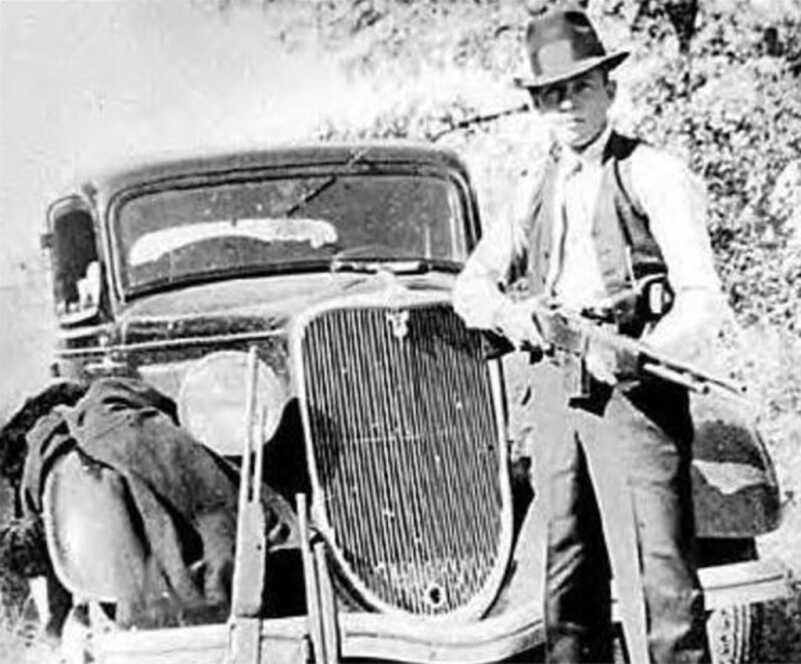
The Prohibition-era gangster Clyde Barrow was a big fan of the BAR. He had three of the big guns in his car the day he was killed. The whereabouts of these three BARs today is unknown.
The gun was also looted out of National Guard armories by motorized bandits during the Prohibition Era. Clyde Barrow was a serious fan.
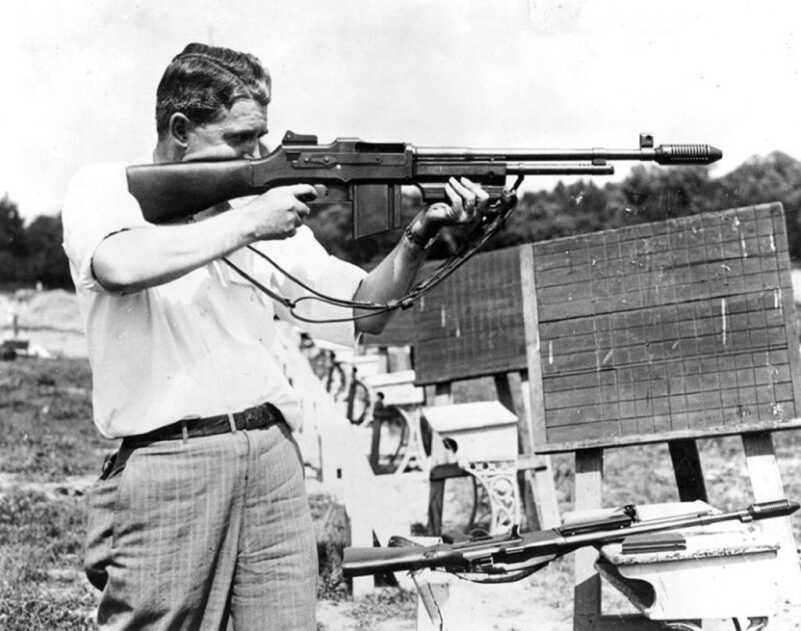
The Colt Monitor stemmed from an effort to make the BAR lighter and more portable. Though they were available for unrestricted civilian purchase most of these specialist weapons went to the FBI. One was purportedly used in the ambush that killed Bonnie and Clyde.
The Colt Monitor Automatic Machine Rifle was introduced in 1931 and included a lightweight receiver, pistol grip, shortened barrel, and Cutts compensator. Only 125 were produced, but you could have bought one through the mail or over the counter at your local hardware store for $300. That’s about $4,600 today.
I’ve only fired a BAR once, and I recall that the gun seemed absolutely massive. The impressive weight and length did help keep those finger-sized .30-06 rounds under control, however. The weapon fired from an open-bolt and was adequately reliable despite egregious battlefield abuse. Quite a few WW2 dogfaces discarded their bipods to make the gun lighter and more maneuverable.
War, Geometry, and Life
The world when I was a kid was absolutely littered with WW2 veterans. 12% of the population served, and those guys came back from all that pain and gore ready to build and create. That is one of the biggest reasons the fifties were such prosperous times in America.

My high school geometry teacher used one of his wartime BAR anecdotes to illustrate mathematical principles.
My high school geometry teacher was a WW2 Infantrymen, and he interrupted class one day to relate a war story about mathematics. While wielding a BAR in Europe he once surprised a German officer on horseback. The Wehrmacht soldier galloped away and he stepped out into the road and emptied the magazine of his BAR from the hip. When the smoke cleared the BAR was empty, and the German officer escaped unscathed. My teacher used that anecdote to illustrate some forgotten mathematical concept about probability. I don’t recall the particular theorem, but I clearly remember the war story.
Denouement
Friends, we really have no idea. In 1945 PTSD wasn’t a thing. These guys, all sixteen million of them, left their homes to fight and die on foreign battlefields so that we could have the freedom to go to church, post stuff on the Internet, and gripe about the government. I once asked Mr. Roberson if he ever struggled with memories from the war. Well into his eighties this is what he told me—
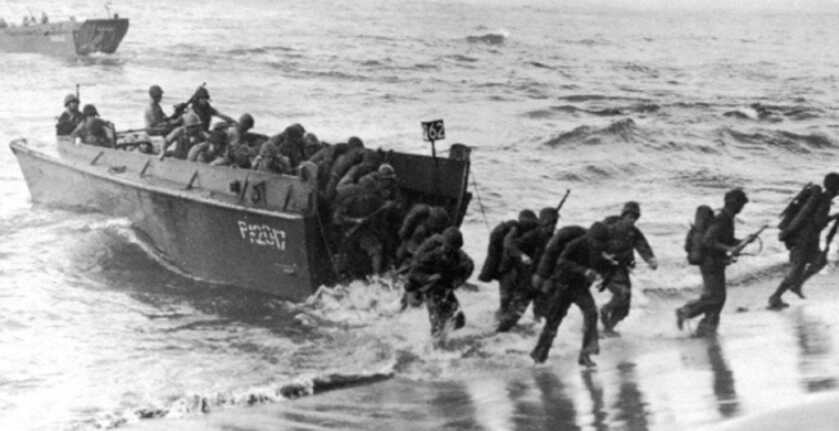

“It used to scare my poor wife to death. I would wake up in the middle of the night sweaty and screaming, dreaming about the things I’d seen and the stuff I’d done. My wife’s been dead for fifteen years now, and I still wake up like that sometimes even now. But once I realize who I am and where I am and that I’m safe at home, I just laugh and laugh.”
Mr. Roberson died quietly of pneumonia five years ago. How can we ever hope to be worthy of a legacy like that?

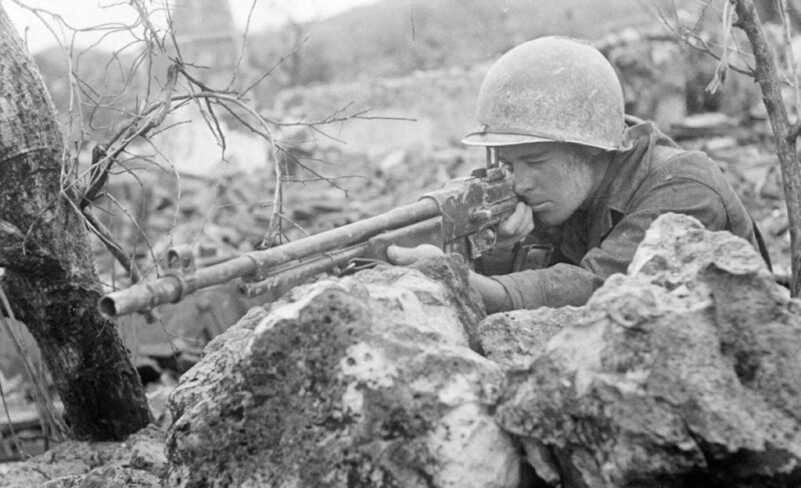
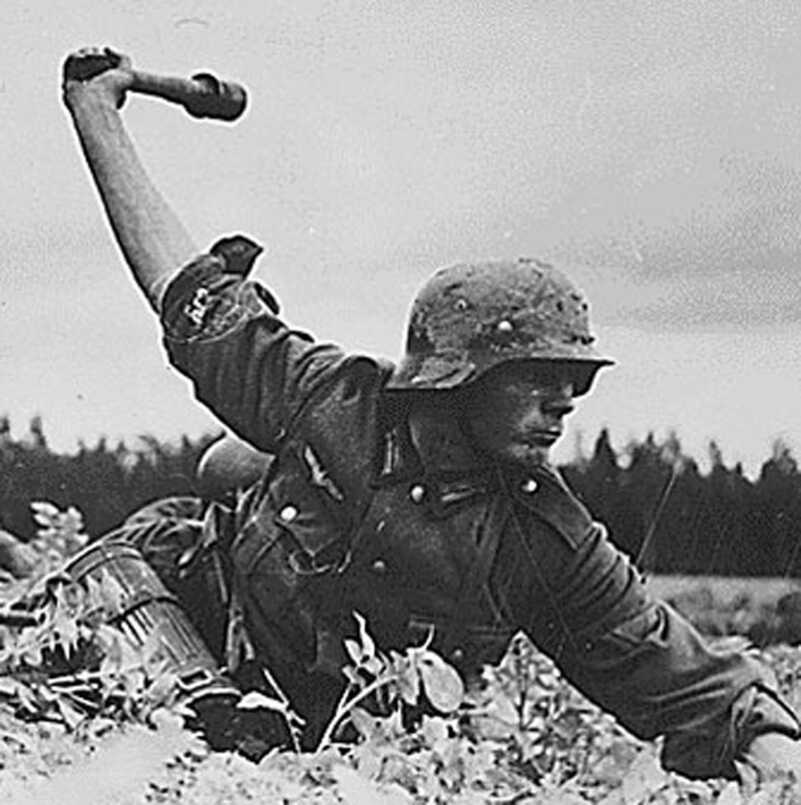
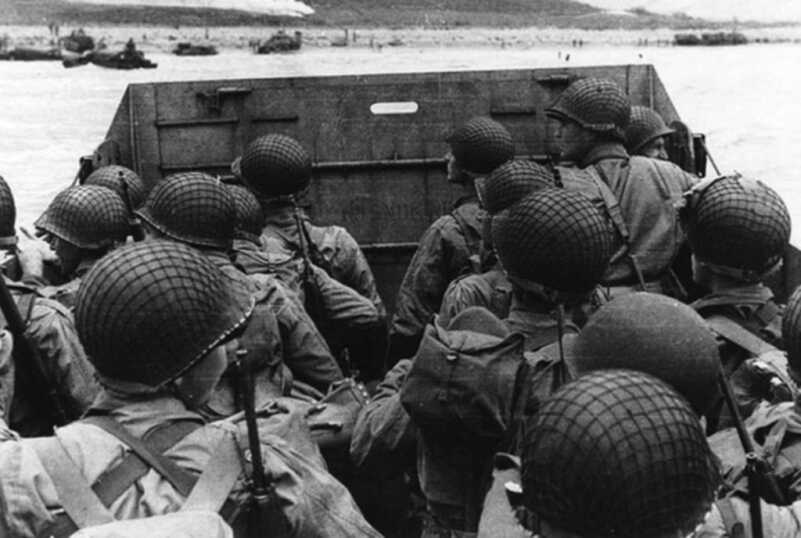
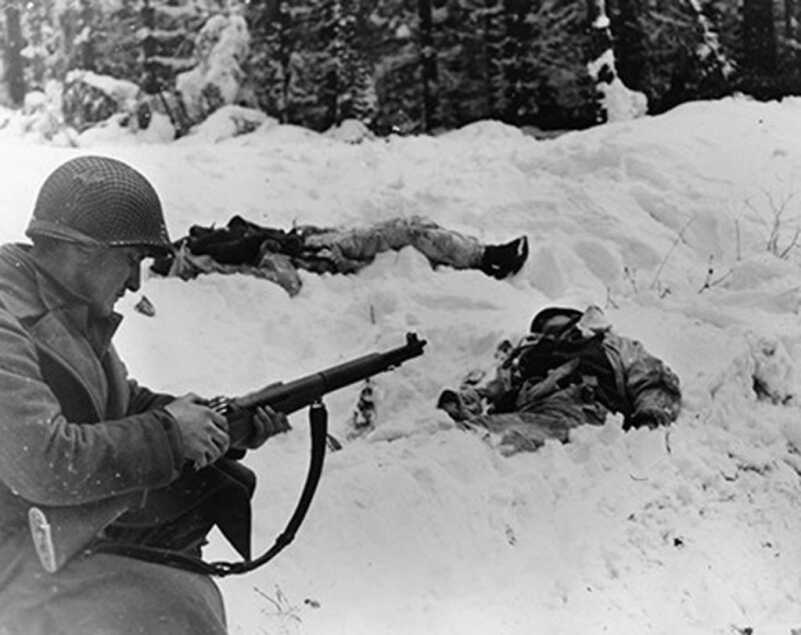
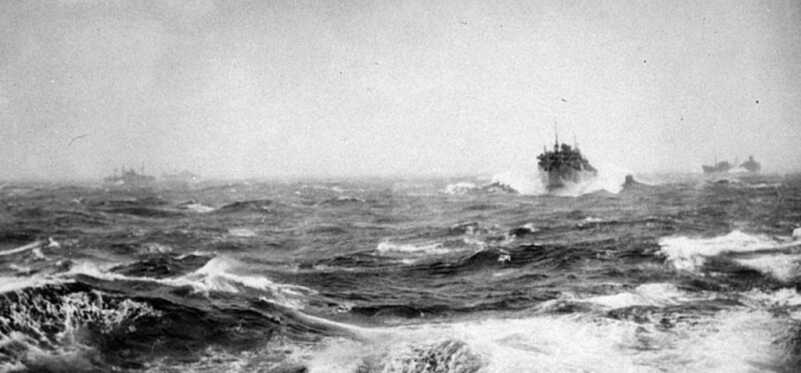

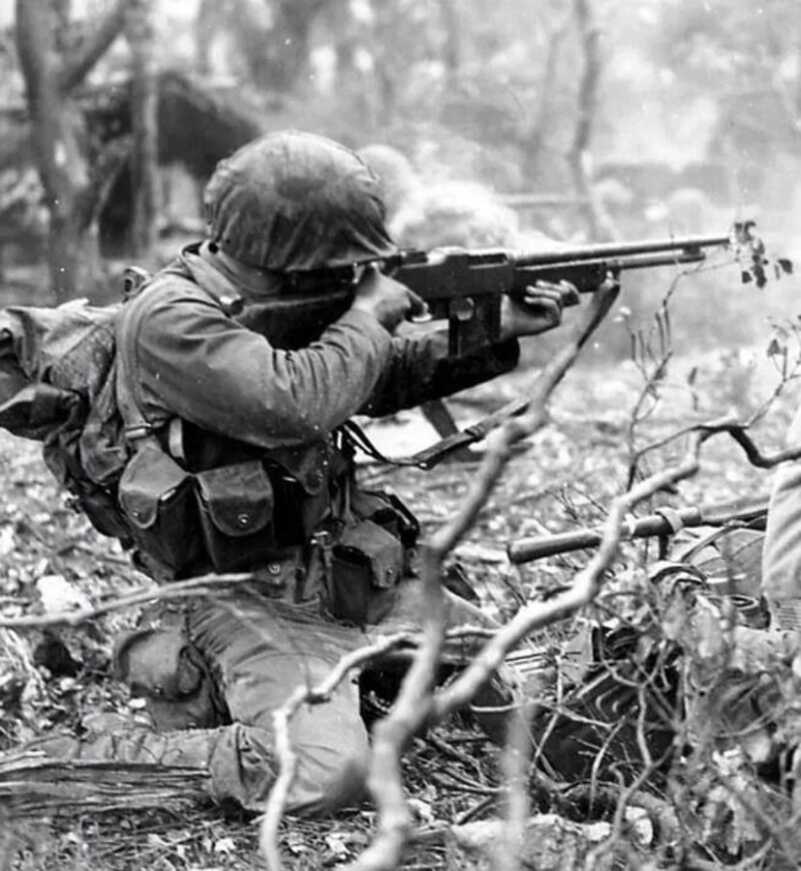
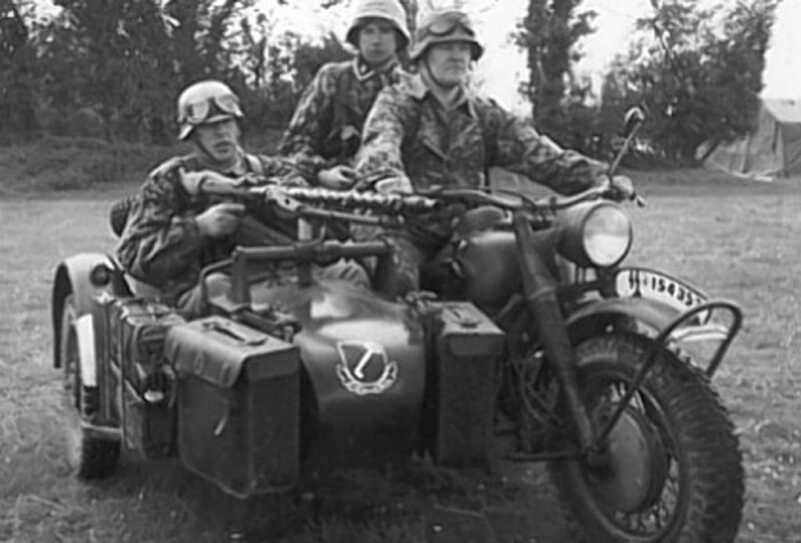
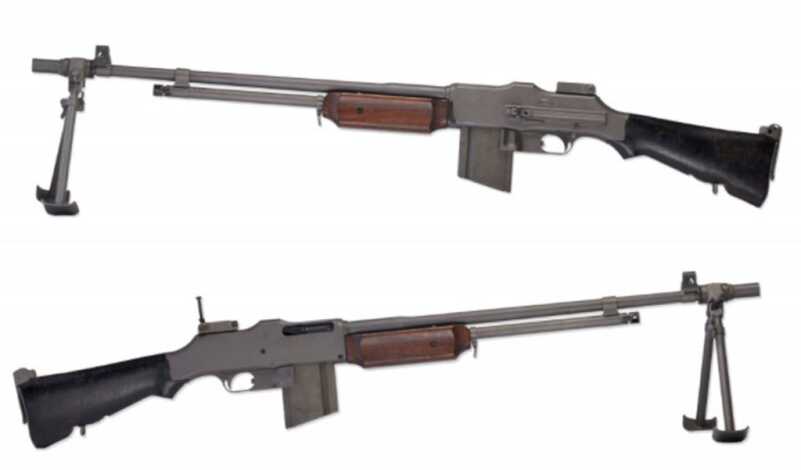




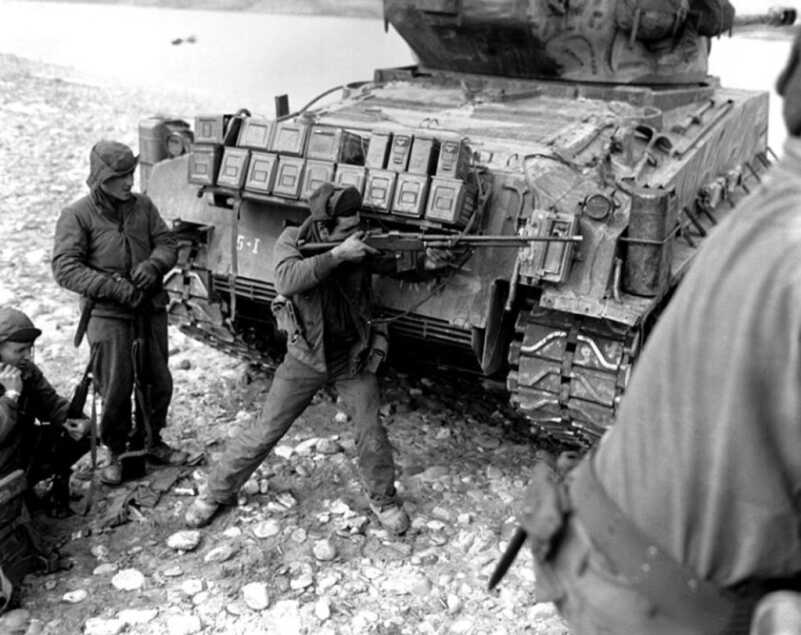
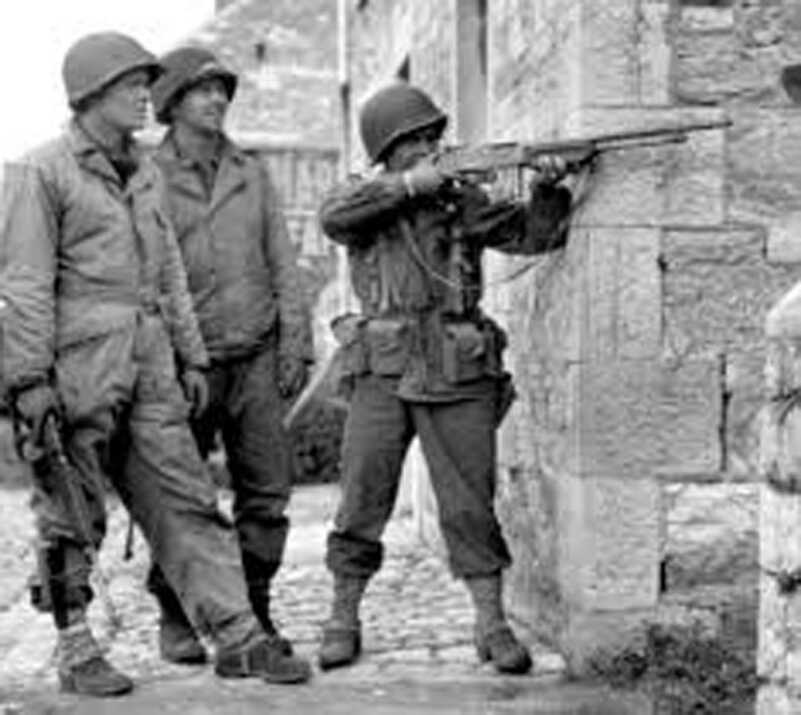

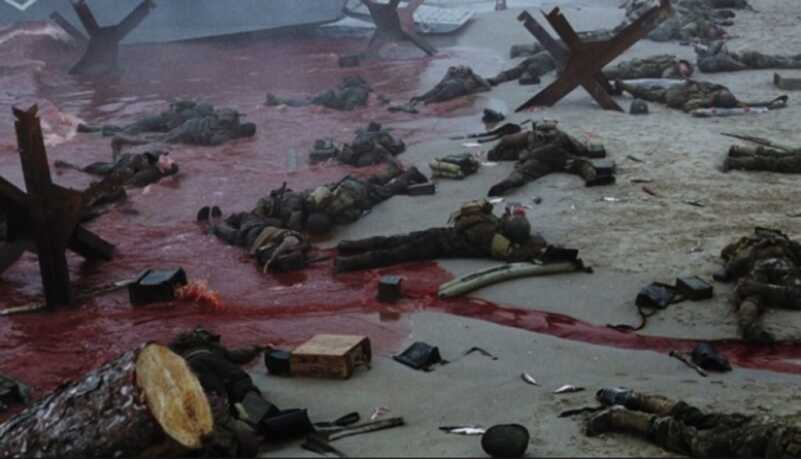


I enjoyed your story about your neighbor and the BAR. My father in law SSGT Truman Phillips, was a ball turret gunner on a B-17 for 27 missions.
I had an uncle that served in WWII in the south Pacifica on Guadalcanal and he was one of many machine gunners that was to stop the Japanese from making a foot hold on a key island . He told me Five machine gunners and five Bar gunners along with the rest of his platoon were strategy place to stop the Japanese as they landed on the beach. Through good intelligence they caught the Japanese by surprise as they came ashore. The battle lasted one night and day, before the Japanese were forced to withdraw. Two machine gunners were killed, three soldiers with bars were wounded. The body count of the Japanese was pushing 500. They caught the Japanese coming ashore and the Japanese thought they could overrun the Americans with a large force, but they were wrong. The machine gun barrels were red hot and they were lucky to have water to cool them down. The Japanese were caught retreating out to sea and were sunk. He told me that they had orders not to take prisoners—-but some were so as to get intelligence.
During my career in the Air Force an individual in a near by room was a X gunner on a B 24 flying out of Italy and was shot down over southern Germany and escaped into Italy and the under ground helped him escape back to the USA lines, but he was wounded and had an infection in his leg and this woman that helped him peed on his wounds to stop the infection and it helped. But the machine gun noise drove him crazy and he would jump out of bed during the night and scream ,” the Germans are coming”. I would have to talk to him for about thirty minutes to assure him everything was under control and we would be there for him.
My father carried one up and down an Asian garden spot named Pork Chop Hill. He swore by it and had to be talked into carrying an M1 rifle.
This was an excellent and yet sobering article that spoke as much to the character of our forefathers that served as it was about the superb rifle that many of them carried into combat. I have an M1A and find it ungodly heavy, and I’m a big, strong man. To think that ‘pipsqueak’ old man half your size humped a rifle nearly twice as heavy on foot over miles and miles of rough terrain (and it was all rough, no matter what theater) is an eye-opening reminder of how easy we have it today, and how we should never judge a book by its cover.
It pains me to admit that I was never able to serve due to physical disability, but I’m proud of my youngest cousin, a Navy officer, and proud of all my ancestors who served (most of them in the Air Force) , whether in a large or small way – it all counts.
I too, see how far some of our youth have fallen or strayed and despair for our future. But even today we still have some young men and women who carry that immense burden of our forefathers and serve. Respect them and treat them well, for they may very possibly be out last best hope in the dark days ahead.
This is probably your best writing ever, Dr. Dabbs. I had the honor of providing medical care to VA patients in northern Idaho for 7 years at a contract rural health clinic. One of my favorite patients was a China Marine who was captured by the Japs in 1940 and survived captivity to be liberated after V-J Day. He developed appendicitis in a prison camp and his appendix was surgically removed without any anesthesia and very little sterile technique in the camp mess hall by an Italian physician and a US Navy Corpsman. He is an amazing man with a wicked good sense of humor who is still sharp at the age of 98. I will greatly mourn the day he passes.
I just returned from one of the greatest trips I have ever been on with 44 other veterans from WW 2,KOREA,VIETNAM,…..AND SO MANY MORE I COULD NOT KEEP TRACK OF THEM. WE MET AT PORTLAAND AURPORT for a meet ‘n greet prior to our flight to WASHINGTON,DC for a 4 days of touring the war monuments. The sight of grown men putting their fingers on a wall with names on it and then bursting out in sobs and crying will last in my minds eye forever. I’m a writer and I wrote my story of a 18 year kid in Korea and now I helped many of these fellow vets through this time of reliving.
GOD BLESS AMERICA
The comments are as great as the article. My dad died of a heart attack in 1972 at the age of 47. I was 19. He NEVER spoke of his part in the war. Two decades later my uncle gave me a box from grandma’s house containing dad’s wartime paperwork and medals. Three Bronze Stars with the citation describing the events. Still cry when I try to tell the story so I don’t often. I feel like I’ve lived here for free and that generation paid my way.
Excellent story Mr. Dabbs! Thank you for taking the time to author it. My father was a Marine pilot who flew F4U’s (mostly) in the Pacific Theater. His older brother took a round on Iwo Jima that pretty much shattered his right hip.
I’ve thought, for a number of years, that watching “Saving Private Ryan” should be mandatory viewing for all high school students.
Everyone that has seen combat are changed, Some can deal with it some can not and most are quite and unassuming. We as a nation have a lot to be thank full for. Even now the ones that make it home are not without their problems, We as a nation should remember these were “Kids” 18-20 mostly and some lied it get in at a younger age. Look into the eyes in the pictures, There are not kids any more.
When I first got married my wife woke me up during one of my nightmares.She got punched in the forehead rapidly 3 times.My mother in law said “the first one was an accident-the other two were on purpose.” Then my little bride got clever.She would keep a yardstick next to the bed with which to wake me up.Her technique sucked as she would always poke me in the eye.Dam!WTF! There’s a lot more of me to poke besides my eyes!Oh- this is supposed to be about the BAR.Never mind.
After serving more than 22 1/2 years in the Army of this great country, all I can say is, “Thank GOD for men and women like this that volunteer to serve and die for our country. The memories of service last long after the final battle. I have lost Army friends from PTSD and the voices and cries of the past never leave. To tell a vet “Thank you for your service!” is a very small price to pay for the freedoms they defend in your name. The millions of veterans today in America should NEVER have to fight for their VA benefits simply because some phony potentate politician doesn’t think America can afford them. America can not afford NOT to take care of their national heroes as I see it. To my buddies who gave into the pangs of war and gave up their lives, I love and miss you. To all the volunteer veterans, THANK YOU from the depths of my heart and soul. “GOD bless the United States of America!”
My uncle carried a BAR in the Pacific theater. He died from 2 bullet wounds after taking out a Jap machine gun nest. RIP Uncle Archie.
That is a great article. Thanks for sharing that with us. Thank all of you who has served and paid the highest price for our freedom. I am forever in your debt for this
As a young Marine in 1959 I was one of the larger guys in my platoon at ITR (month long infantry training at Camp Pendleton) and thus got to carry the BAR frequently. I loved shooting it but hated carrying it, plus all the ammo. When you sometimes had to run at a full sprint for several hundred yards you were lucky to have enough wind to pull the trigger when you got there.
Great article! Everyone in my family served in the military, and my dad and all my uncles too! One of them was at Iwo Jima, and mom would wake him up with a broom handle, because other wise he would waylay you!! He would usually be reaching for his bayonet under the pillows that wasn’t there of course. He and my dad saw some terrible things we could never get them to talk about. I felt like I had to get them to talk, because we had to know the history; and I didn’t want it to die with them!
The BAR was so deadly the enemy was schooled to take it out as fast as possible. That’s why most pictures of combat BARs in use have no bipod. The bipod’s silhouette could be made out at long range and was a priority sniper target.
I really liked the BAR even if it was such a pain to carry. My uncle carried one in the Pacific in quite a few places…Loved it. 3 uncles and my father fought in the Pacific. One being badly wounded. Father in Law fought in Europe with the Brit Commandos until 44 and went ashore in Normandy. Earned 2 Bronze Stars Silver Star and the French Croix de Guerre first order. He was the real deal. Never talked about his experiences unless he had a few drinks. Took him to see Saving Private Ryan. Brought him to tears as he told me it was the most realistic war film he had ever seen. But he didn’t watch many of them. Passed away in 2001 just shy of the age of 102. He lied about his age to get in the military in 1939. He was one who dealt with his (bad) memories on his own. One hard man. These men were my heroes! Thank you Mr Dabbs
My wife’s great uncle carried a BAR through Sicily and then went in with Patton after D-Day and carried it throughout the remainder of WW 2. He was one of those country boys that was a good shot. He said the draw back on the BAR was how quickly the barrel would warp and they were hard to find. He said that he got just as good shooting from the hip as he did the shoulder with a straight barrel. His claim to fame was that Patton knew him by name. He said one night Patton called out to him, “Johnny, it’s me! Patton! I forgot the password! Don’t shoot!” He came out and sat in the foxhole that he shared with a buddy, lit up a smoke (very forbidden in the dark of night) and chatted with them. He really liked Patton.
Thank you for this story. My Grand dad was there on D-Day as well and spoke little of his experiences throughout Europe during that time. I learned a great deal about his courageous efforts and hardships from my Grandmother and eldest uncle after he’d past. They were truly, “The Greatest Generation!”
Me oh my!
I just had to read the whole story through. As the writer said in the beginning, about Saving Private Ryan, there is always an individual behind every story, and each of these individuals is so easy to diminish to the little parts we are in such a big thing. The thing we call History. The little parts that together formed the Armed Forces and stopped the Evil Empire.
I bow my head and give my humble Thank You to them.
Born just after WW2 in a country that was lucky enough to be left alone, although the neighboring countries suffered.
BW in Sweden (Not Switzerland)
God Bless our great American heroes. God Bless my dad and his 6 brothers who fought from North Africa all through Europe and returned to the US. God Bless them and the great legacy they left us. The older I get the more I respect and admire all they were and all they did. God Bless them. As to firearms: my dad told me he fired everything, had his pick and chose the 30-06 Garand. He loved that rifle, literally loved it and preferred it over everything. I dont know how many times he told me how he loved that rifle.
God Bless our great American heroes. God Bless my dad and his 6 brothers who fought from North Africa all through Europe and returned to the US. God Bless them and the great legacy they left us. The older I get the more I respect and admire all they were and all they did. God Bless them.
Wow! That was a wonderful story! Simply fantastic!
Those were “real” men! My dad was in the Pacific, a landing craft coxswain & shore party gunner in all the big ones in the last 1.5 years of the war. His one brother was 82nd Airborne & fought from Africa to the end in Germany, including Normandy, & Bastogne, their older brother was one of 12 survivors of the USS Wilkes, sunk in the N. Atlantic. My mother’s brother was infantry (forgot the outfit, but was a “Texas” division) landed in the 2nd wave at Normandy & went on until gravely wounded in Belgium. Between them were 4 purple hearts, 3 bronze stars & a silver star. What those tough old guys did in a month or even a week, was more than I did in 13 months in VN & those poor guys lived in the harshest conditions you can imagine. We pretty much had hot chow & a nice bunker with a cot, except when out on patrols.
The world just cannot give enough credit & accolades to these “true heroes”!
And Yes!, “all” of them had PTSD!, but they just got thru it & built very successful lives!
Thank God for these young boys that gave their youth in that horrendous war!
Great read Mr. Dabbs, I really get into “war stories”, I worked for a man in the 60’s that was a POW of the Japs, he got captured on the Island of Java at the start of the war and spent 4 years as a pow building a railroad in Burma and Thailand. He shared many of his experiences with me and is also in a book “The Bamboo Express” written by another pow Benjamin Dunn. His brother was also a WW2 survivor and carried a BAR in the Pacific. I had another good friend Dale Hanna who lost his twin brother at the Battle of the Bulge. So many hero’s that never spoke much about it, I consider myself lucky to have known some of them and listened when they did decide to talk about it. I was a paratrooper in 64-66 and often wondered what went through there young minds when they jumped in in France and were getting shot at. Can’t imagine what it would have been like. RIP to all WW2 vets. and all vets of any time. Terry Landenberger
Best story I’ve read in a long time. I’m great full for them old Vets. I’m a VM vet myself. People today just don’t understand or care what it takes to be free.
Dr. Dabbs, thank you for your service. My father was a civilian flight instructor for the US Army at Ft. Rucker, Alabama, teaching young pilots, giving final check rides before they were certified and sent off to Viet Nam. The longer this conflict went on, the more concerned he became as the hours necessary for flight qualification were reduced time and time again as the number of pilots assigned to instructors grew with each new class, and his concern about new pilots acquiring the skills needed to survive gave him nightmares about their survival. He was able to retire in 1973, and the relief it gave him was very evident in his life afterward. He only spoke of his Okinawa experience during WWII as an 18 year old draftee and helicopter experience later when in the company of other veterans, finally was able to recall them and discuss them with me shortly before he passed away in 1987 from cancer. Maybe he was one of your instructors, Barker “Red” Brummett. God bless all of those who have served our country in time of need.
I remember films of guadicanal,more soldiers die in accidents than war today. my fathers friend was in iwo gima and guadalcanal ,he was not normal,he was convinced he was invincible.I
am concerned about the new generation.after our florida election,which i thought would be a runaway,I’m reminded of my t-shirt,common sense,so rare it’s like a super power,students having ptsd from final exams
Well done, Dr. Dabbs. So many great comments in your article that brought back family history and events. Thanks for writing something relevant and valuable. Will share with my sons. And I still use my modern BAR .30 06 for deer hunts in Minnesota. Chris
This article was truly heart pulling, considering all of the things that are going on in our nation today. I wish the youth were taught about our beautiful history in our nation today.
This generation coming into being has lost America’s greatness in their delusions of gender changes, Antifa, and sheeple like obedience to the political parties. GOD help us. My uncle didn’t die for that.
No, sir… nor did my uncle die for it. Nor did my father (and I) serve, merely to enable that degeneration of America to happen.
Mr. Dabbs, I love your respect. Thank you.
My Dad was a combat infantryman who carried a BAR in WWll, first to help secure the sub pens in St Nazzaire and L’Orient with the 66th, then on with Clark and Patton to Berlin. He died at 87 in 2005 and only then did I see and read commendations of him and his outfit. He didn’t talk much about the war, like most combat vets, it was something he wanted to forget. He was and is my hero.
Thank you, Will Dabbs, one of you better stories.
My dad went to the Normandy shores of France on June 6th 1944 and was in the battle of the bulge but never talked about it until two weeks before his death. He liked to fish but never hunted and since my grandfather ( a WW1 vet) hunted I asked him why grandpa never taught him how to hunt, he said he did but he’d seen so much killing and death in the war he couldn’t bring himself to pick up a gun ever again.
Carried a BAR for two years starting in early 1959 when I went through pre-deployment training at Camp Pendleton, CA prior to 2nd Battalion, 1st Marine Regiment being transferred to Okinawa for a 19 month tour. After returning from Okinawa I became a Fire Team Leader and turned my BAR over to a PFC from the Sioux Nation in North Dakota, this young Native American took to the BAR like he was born with it, on the Camp Pendleton yearly BAR competition, he out shot everone at ranges over 1000 yards becoming the BEST BARMAN in the 1st Marine Division! I reenlisted and went back for a 2nd tour on Okinawa leaving that unit, always wondered what happened to that young Marine!
Great article. These men and women who served in the World Wars were such heroes that we are humbled at their memories.
Thanks to the both of you for sharing this story. And for the info on the Browning. The men and women of both World Wars were truly impressive in their commitment to freedom. I don’t know that any of us can really understand the cost to all our veterans. ALL should be treated better for the price they paid…..
I served from 1964-1972, mostly in Vietnam. I sometimes look back and think I did well, but compared to our fast-disappearing WWII vets, I did next to nothing. We owe them so much, and I never fail to thank a veteran for their service. God Bless America.
Thank you for your service to our Country and the great story of your patient. Great read and liked the factual and technical info too.
Thx, Eric, Sgt, USMC, Ret
He was truthful about Patton. My father was his remount officer. First met in Texas where he ride horseback the Mexico border to make sure that the Germans didn’t invade through Mexico. Finally replaced by 2 airplanes most caverly posts were disbanded and he ended up with Patton in Germany. My father said he was a great General but was not fond of him. He said even after Patton died in the Jeep accident he was a pain because dad had to ride in a cold box car taking his body back. He was vulgar, miserable but a finatic about past battles and the best General we had. He also was with him in a tank at the battle of the buldge.
My dad was at omaha beach,he was a paratrooper.was dropped in early with a group that set charges.he told several accounts of what he did,seen n endured.
These storys need to be made bigger for those who take our freedom for granted. And politicians who say surrender our guns
Robert, it scares me to death at the number of people in this country so willing to give up rights and the freedom these brave men died for. Many in this country are so clueless and won’t realize it until it is to late.
Once again, well done, Doc! America is a poorer place with the loss of the Greatest Generation 12%. The current .45% do their legacy proud, though.
Thank you for such an amazing story about Mr. Roberson. These men were truly the back bone of America. I work at the VA Hospital and enjoy every moment with the greatest generation.